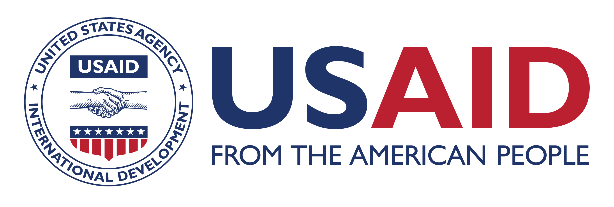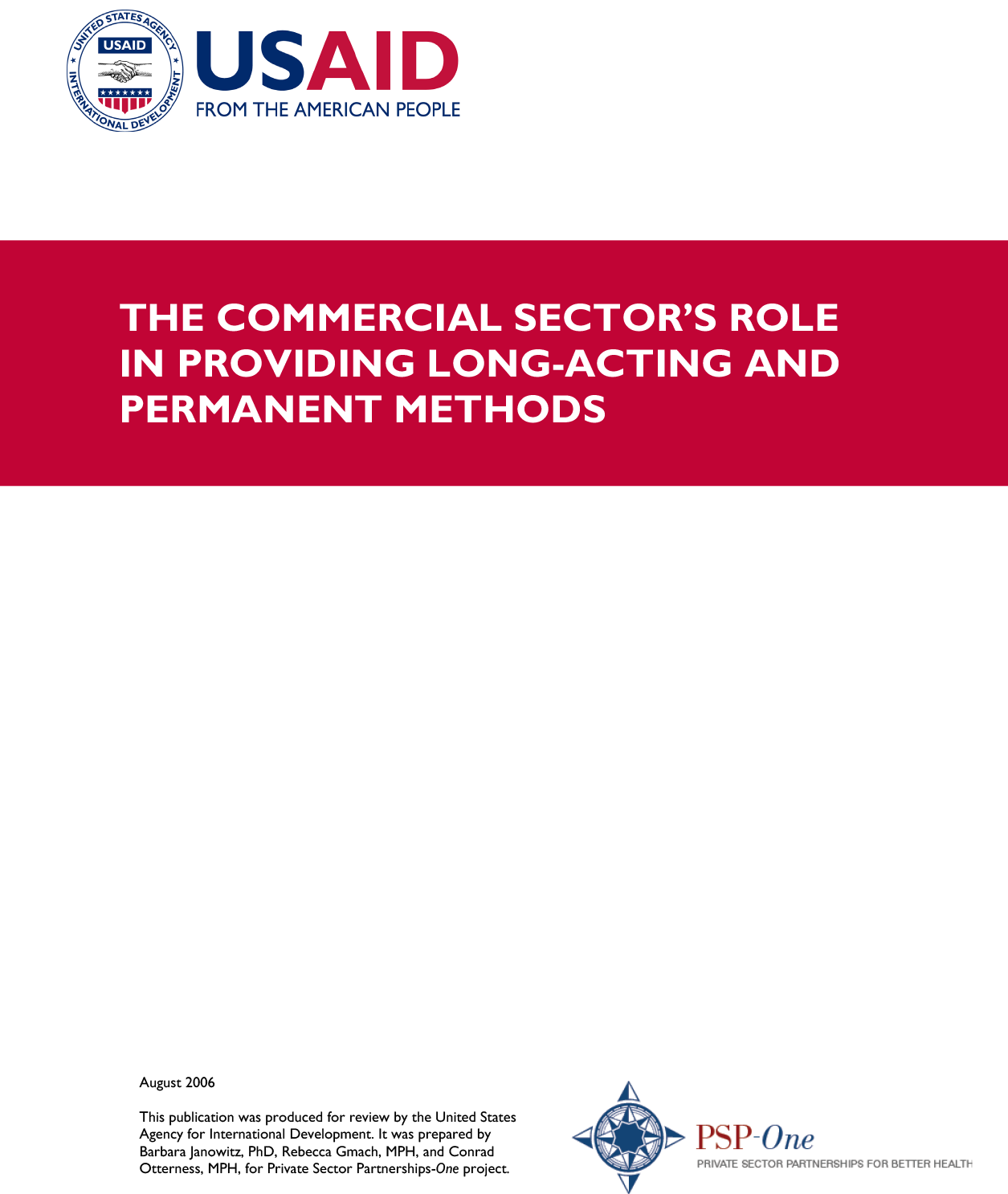
Resource Library
The Commercial Sector's Role in Providing Long-Acting and Permanent Methods
The report, developed by the PSP-One project led by Abt Associates, provides information about the use of long-acting and permanent methods (LAPMs) and the role of the commercial sector in their provision. It examines changes in the use of LAPMs and the sources for acquiring them. Data from a few countries are used to examine how ability to pay affects the use of LAPMs in the commercial sector. We obtained information on the use of LAPMs from 63 of the most-recent reproductive-health survey reports. Where possible, we divided the sources into commercial, nongovernmental organization (NGO), and public source categories. We also analyzed trends in method and source use for countries where we could obtain information on the use of the commercial sector. Lastly, we analyzed LAPM use and source by wealth quintiles. LAPMs are used less often in sub-Saharan Africa than in other developing country regions worldwide, although there were large variations in the composition of LAPMs used in these different regions. In the Central Asia/West Asia/North Africa/Europe region, use of intrauterine devices (IUD) was high, but sterilization use was low. In contrast, use of sterilization was high in Latin America, but some countries in this region also had high usage of IUDs. In only one sub-Saharan African country was use of sterilization high (South Africa). Three South and Southeast Asian countries had high use of sterilization; only Vietnam had high use of the IUD. The report finds that for the eight countries with high levels of IUD use where information on the commercial sector was available, the commercial-sector share of the market ranges from 16 to 39 percent with use in five countries between 30 to 39 percent. However, use of the commercial sector for female sterilization reaches only 20 percent or better in four of eleven countries with use 30 percent or better in only two countries. The wide variation in patterns of commercial sector use among countries may occur because clients have trouble accurately reporting their source. An examination of trends in the use of the commercial sector for IUDs and sterilization showed that where the use of these methods increases, at best the commercial sector grows too, but its market share does not. In some cases it even decreases. We examined how ability to pay affected LAPM use and source for a handful of countries. In four countries the public sector remained an important contributor to IUD use among those in the higher wealth groups. Only in Egypt and Jordan was the commercial sector a more-used provider in the highest ability-to-pay group. Findings were similar for sterilization: the commercial sector was the dominant source in only one of four countries in the highest ability-to-pay group. Thus, even among those with the greatest ability to pay, the role of NGOs and the public sector dwarfs that of the commercial sector. The data makes clear that progressing from public to commercial provision is not a natural process. Unless there is concerted effort to segment consumers, upper-income women may not graduate to the commercial sector. While an opportunity exists, more knowledge is needed about the barriers to graduation and new strategies to work across sectors need to be developed. Several research recommendations were also identified:
- The categorization of private sources should be differentiated between commercial and NGO.
- More information is needed to understand why consumers with the ability to pay do not use the commercial sector.
- Analysis of additional data sets needs to be conducted to better comprehend the impact of ability to pay on the use and source of LAPMs.
Resource Type : Report
Country :
Year : 2006-08-25T10:15:00
Language : English
Project : SHOPS


